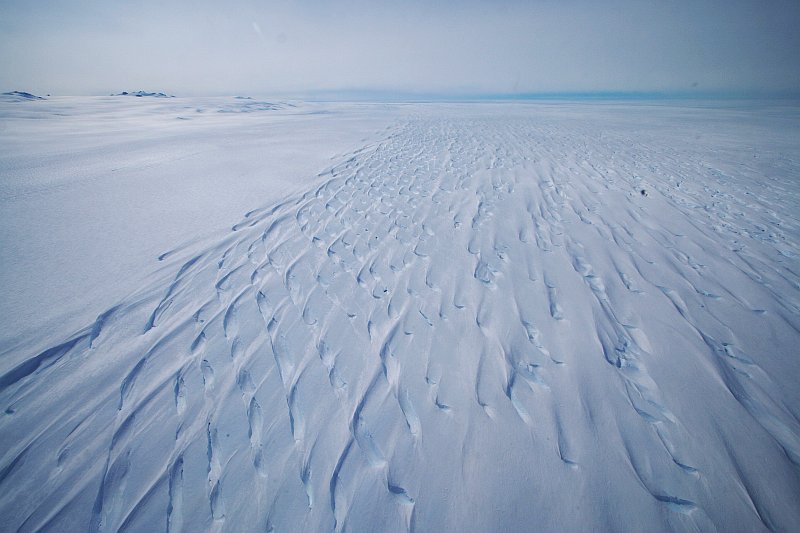I’m embarrased…
â?¦not yet to have written something on our (very brief) visit to Troll.
I took great pleasure in meeting our Norwegian counterparts, as I’ve always had respect for their Antarctic exploits. The ever-stoic Amundsen was Norwegian, beating Robert Scott to the South Pole through his adoption of traditional methods of ice travel. The account of his successful expedition is inspiring reading; it tells a tale of a man dedicated and undistracted: “Adventure,” said he, “is simply poor planning.” The Norwegian involvement in Antarctica did not stop with Amundsen, however. Most of Queen Maud Land (or Dronning Maudland, if you wish to tip your hat) was explored and mapped by the Norwegian Antarctic Research Expeditions (NARE), which explains why so many of the landmarks in our area bear names in their language.  The South African expeditions are also historically tied to Norway, as the site of our first research base was that of a Norwegian establishment which was handed over in 1959. Nowadays, the co-operation continues as we exchange knowledge, assist each other with logistical arrangements, and collaborate on scientific projects.
The first thing to strike me about Troll was it’s absolute difference in appearance to SANAE, or Neumayer for that matter. Built on a low neck between two peaks, it is a profusion of small buildings, storage facilities, equipment and containers – very unlike the self-contained sleekness of SANAE, or the concealed-below-the-ice Neumayer. I felt as if I was venturing into a Yukon mining village, replete with honkey-tonk bar and yapping malamutes. Of course, the impression faded as I explored the technologically advanced base. How can I make such a sweeping statement? Well, any base that uses their excess heat energy to power a jacuzzi must be pretty advanced :) Troll has only 6 overwintering team members, although they are looking to expand upon this, and so they use every available spot for accomodation during the summer. About a week before our arrival they had 45 visitors, including the Norwegian Prime Minister…who slept in a tent. Need I say more about my respect for their nation?Â
The second thing that stood out was the use of wheeled vehicles at Troll. Being built on the slopes of a large mountain, they have real ground to walk upon (as opposed to the ice and rock at SANAE) and have thus they have made some dirt roads around the base, and down to their runway. It is odd to see a quad-bike passing one way on a dirt track while a skidoo flies by in the opposite direction on the adjacent snow, but then Antarctica is full of suprises. What I never thought I would see, however, was a large bakkie (aka pick-up truck, for the non-SA readers). Yes, it was a genuine Toyota Hilux, standing proudly in front of the base. Let’s see the Land Rover fan club live this one down…
Our expedition’s geologist, Dave Hedding, is undertaking a series of experiments which include the need for measurements of temperature variation within the soil, rock and ice relative to the air temperature. Problem: We have no soil to speak of at SANAE. Solution: The Norwegians, having plenty of the brown gritty stuff, invited Dave to install his logger at their base. This was accomplished last year, and Dave was now able to download a year’s worth of data from the diminutive logger. With Dave on hand to point out the local features, it was fascinating to see the sorting of rocks, pebbles and sand into geometric patterns that happens as water within the ground thaws and refreezes. Pictured below is Dave downloading the data with the assistance of Jen Lee, our biologist.
Jen was interested to discover that there is a population of the mites which she is studying on the nunataks at Troll, and as her work involves comparing genetic variation between these isolated populations, she will hopefully be working with the Norwegians in the future.
My mission at Troll was to meet the base doctor and tour the medical facility. Dr Ã?ystein Johansen was somewhat suprised to see me, as he hadn’t been told of our visit. Recovering quickly, he took me on a gentlemanly tour of the base, and we had a good discussion about the medical facilities at our respective bases. Troll’s hospital is smaller than that of SANAE IV, but well equipped. Diagnostic equipment is very similar between bases; SANAE has slightly greater operative, anaesthetic and dental capabilities. The pharmacies of the two bases are quite similar in content, although I have not done a detailed comparison. If you want to learn more about Troll through the eyes of their summer doctor, visit oysteinantarctica.blogspot.com  where he has a blog.Â
  All too soon the weather began to worsen, and so we hurriedly bid farewell to our hosts and boarded the helicopter. The journey back to SANAE was beautiful, with the Juttelstraumen dominating the views – I’ll post some more photographs in a photo gallery before too long, but here is an example:








